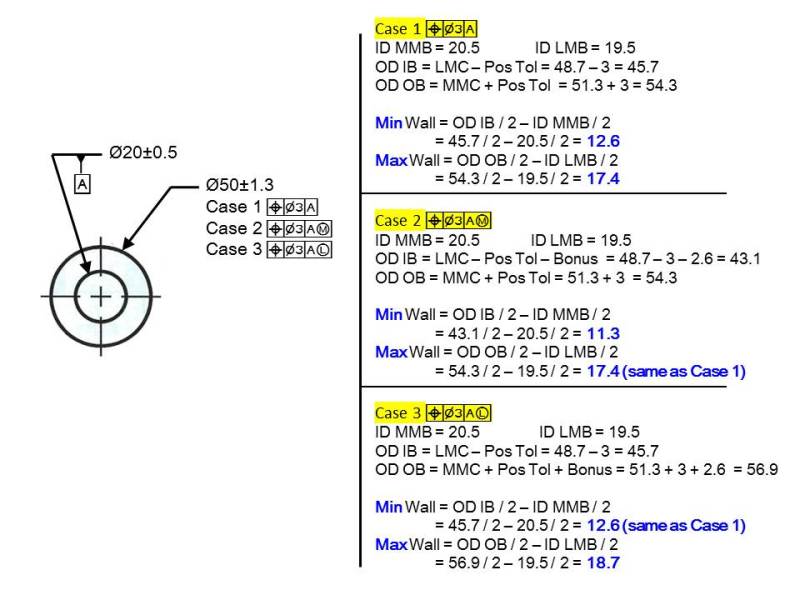gabimo
Mechanical
- May 2, 2013
- 124
Calculate the minimum wall thickness
When both features (considered features and datum feature) are at RFS, do we need to include both form errors in the stackup calculation?
Cylindrical part with a thru hole
Dimensions in mm
ID: 20 ± 0.5—datum feature A
OD: 50 ±1.3, position Ø3 (RFS) to A (RFS)
What is the minimum wall thickness:
Form error on A: 2x 0.5 = 1mm
Form error on OD: 2x 1.3 = 2.6mm
X max, x minimum,
When both features (considered features and datum feature) are at RFS, do we need to include both form errors in the stackup calculation?
Cylindrical part with a thru hole
Dimensions in mm
ID: 20 ± 0.5—datum feature A
OD: 50 ±1.3, position Ø3 (RFS) to A (RFS)
What is the minimum wall thickness:
Form error on A: 2x 0.5 = 1mm
Form error on OD: 2x 1.3 = 2.6mm
X max, x minimum,

![[wink] [wink] [wink]](/data/assets/smilies/wink.gif)
![[bigsmile] [bigsmile] [bigsmile]](/data/assets/smilies/bigsmile.gif) I am nowhere near as experienced as the famous names in this sub forum. Having Solidworks at my disposal helps me tremendously.
I am nowhere near as experienced as the famous names in this sub forum. Having Solidworks at my disposal helps me tremendously.